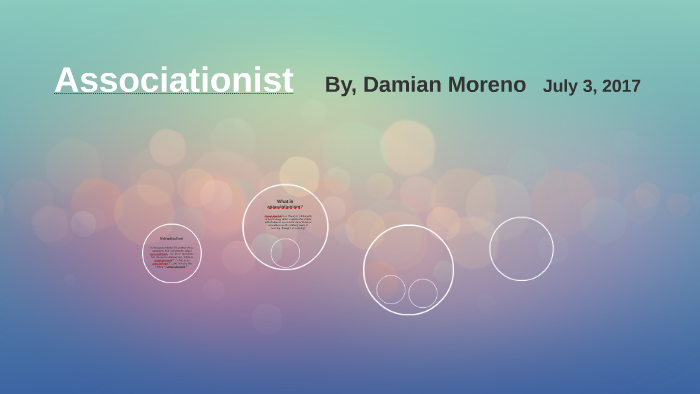His Principles of Psychology was first printed in 1855, four years before On the Origin of Species, however was substantially rewritten by the third version, which is the major focus here . By this level, the work had been folded into his System of Synthetic Philosophy, a ten-volume set treating everything from physics to psychology to social policy . Secondly, and partly because of this, Spencer viewed evolution as a common drive for progress; species actually get better as they evolve. Despite his idiosyncratic views, Brown recognized his position as associationist, and it was accepted as such by the custom.
- She was a scholar of James, and despite his enthusiastic support, she was refused her PhD from Harvard because of her gender.
- Overall, Stewart’s discussion of the query of how far one traces the causal/explanatory thread captures the final situation.
- When discussing an associative implementation base it may be very important distinguish questions of associationist construction from questions of representational actuality.
- In the Project, Freud conceives of the nervous system as a community of discrete, however contacting, neurons, through which flows a nervous power he calls “Q.” As neurons turn into “cathected” with Q, they finally discharge https://saudeteu.info/ to the next downstream neurons.
Currently, it is completely forbidden to hold out research like this for obvious moral reasons. A consultant experiment in classical conditioning is that of Little Albert. They felt that worry, anger, and love had been the unique patterns of emotional reactions in children and developed as they grew older.
A Short Historical Past Of Psychological Theories Of Learning : Jerome Bruner
We establish a selection of flaws in Waldmann and Holyoak's experimental procedures and report three new experiments designed to test their claim. In Experiment 1, cue selection was noticed regardless of causal order and regardless of whether or not the cues had been abstractly or concretely specified. In Experiments 2 and three, cue choice was again observed when subjects predicted causes from effects. We conclude that our outcomes are consistent with easy associationist theories of studying but contradict Waldmann and Holyoak's causal model concept. Finally, in conditioning experiments that have offered the motivation for the Rescorla-Wagner model, cues are predictive but devoid of inherent value whereas the outcomes are biologically relevant occasions like the dispensation of food or electrical shock. Because of this inherent asymmetry, it's believable that cues are used to predict outcomes and not vice versa (although research in animal learning has argued for fashions incorporating reciprocal cue-outcome connections; Matzel et al., 1988; Honey et al., 2020).

Thus, paradigmatic mappings linking two varieties typically have different strengths in several instructions. When exposed to p→t∫ utilizing the random order in , members judged singular-plural pairs exemplifying the stem change as being extra acceptable than those without the change. In each judgment and production, in addition they didn't know what stems should change and what stems mustn't, indicating that that they had not discovered paradigmatic, second-order mappings. However, they'd not change any stems while judging that each one stems should change.
After The Cognitive Revolution 1950s
However, this is not as a result of the low studying causes the rain but quite because these two results have a standard cause in a low atmospheric stress. However, this inference just isn't warranted if one intervened in the normal causal processes by interfering with the mechanism of the barometer to supply the low reading. Blaisdell et al. investigated whether the humble rat may carry out this form of common-cause reasoning. Note that, in any case of paradigm leveling, there's a kind that would fully express the supposed semantics.

In the resulting associationist custom, affiliation was a relation between imagistic “ideas” within the trains of conscious thought. The rise of behaviorism in the early twentieth century brought with it a reformulation of the concept. Behaviorists handled affiliation as a hyperlink between physical stimuli and motor responses, omitting any intervening “mentalistic” processes. However, they nonetheless treated association simply as centrally as the empiricist associationists.